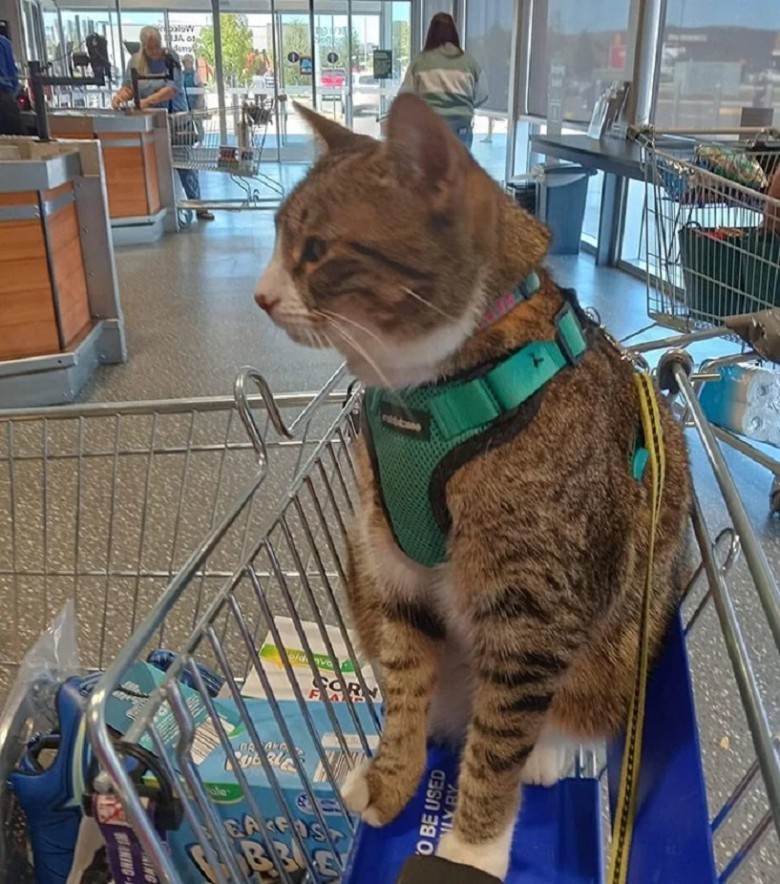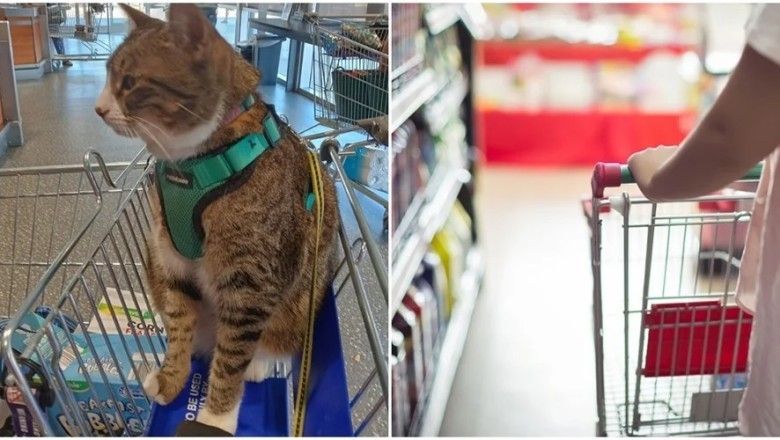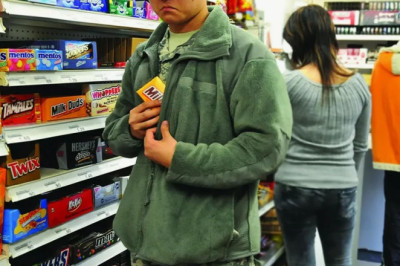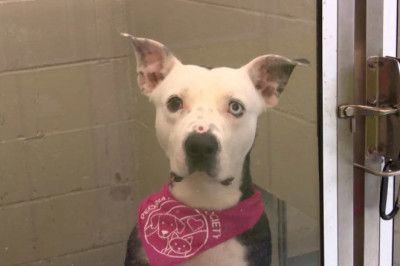This photo of a cat in a supermarket trolley has sparked a significant amount of controversy among netizens. While some found it charming, others raised concerns about hygiene, rules, and potential harm to allergy sufferers. The cat's owner, who visited an Aldi supermarket in Canberra, Australia, stated that the cat is a service animal with official documents and appropriate training, and he has the right to bring it to the store due to his disability.

Opinions on this matter are divided. Some users criticized the ease with which people can obtain harnesses for their animals and pass them off as helper pets, considering it ridiculous. Others focused on the potential unhygienic aspect of having animals in the same place where food is placed. They questioned the appropriateness of bringing animals into grocery stores.
There is a valid concern raised by users who are allergic to cats. They argued that the presence of the cat could pose a danger to their health. One user even stated that their children would feel unwell if they were to use the same cart after the cat due to severe allergies.

It is important to note that while dogs are the most commonly used service animals, cats often serve as therapy animals for emotional support. These animals provide comfort, emotional support, and assistance to individuals with mental disorders. According to the rules, such animals are allowed to accompany their owners in stores.
This situation highlights the need for further discussion and clarification regarding the presence of animals, particularly non-traditional service animals, in public places like supermarkets. It is crucial to strike a balance between respecting the needs and rights of individuals with disabilities or mental disorders and maintaining proper hygienic standards in public spaces.

Ultimately, a respectful and understanding approach is required to navigate situations like these. While it may be easy to pass judgment or express personal discomfort, it is important to consider the diverse needs and circumstances of individuals who rely on animals for assistance. Finding common ground and developing clear guidelines can help ensure the well-being and inclusion of everyone involved.
In order to address the concerns raised by various users, it is crucial for supermarkets and other public establishments to establish clear guidelines regarding the presence of animals, especially non-traditional service animals, on their premises. These guidelines should take into consideration factors such as hygiene, safety, and the needs of both disabled individuals and those with allergies.

First and foremost, proper sanitary measures must be in place to maintain the cleanliness of the shopping carts and the overall shopping environment. This may involve regular cleaning and disinfection of carts and designated areas where animals are allowed. By implementing thorough cleaning protocols, the risk of allergens or contaminants is minimized, ensuring a safe shopping experience for all customers.
Furthermore, establishments could consider designating specific areas for individuals with service animals. These areas could be equipped with pet-friendly amenities, such as waste disposal facilities and water stations, to accommodate both the needs of the animals and the concerns of other customers. This segregation could help mitigate potential allergic reactions and aid in maintaining a hygienic shopping environment.
Education and awareness campaigns can also play a crucial role in fostering understanding among customers. By promoting the importance of service animals and their role in assisting individuals with disabilities, the stigma surrounding their presence in public places can be reduced. This would enable a more inclusive and empathetic environment for everyone involved.
Additionally, individuals who rely on service animals should take responsibility for ensuring their pets are well-groomed and properly trained. This not only helps to avoid any potential issues but also demonstrates respect for other customers and promotes positive perceptions of service animals in public spaces.
Overall, finding a balance between accommodating the needs of disabled individuals and maintaining a clean and safe shopping environment requires open dialogue and collaboration between supermarkets, customers, and organizations advocating for disability rights. By establishing clear guidelines and providing appropriate facilities, supermarkets can create an environment where disabled individuals can seamlessly access their services while also respecting the concerns of other customers.
In conclusion, the controversy surrounding the photo of a cat in a supermarket trolley underscores the importance of addressing the presence of animals in public spaces. By implementing clear guidelines, promoting understanding, and maintaining hygienic practices, supermarkets can create an inclusive environment that accommodates the needs of disabled individuals while ensuring the well-being and comfort of all their customers.

























Comments
0 comment